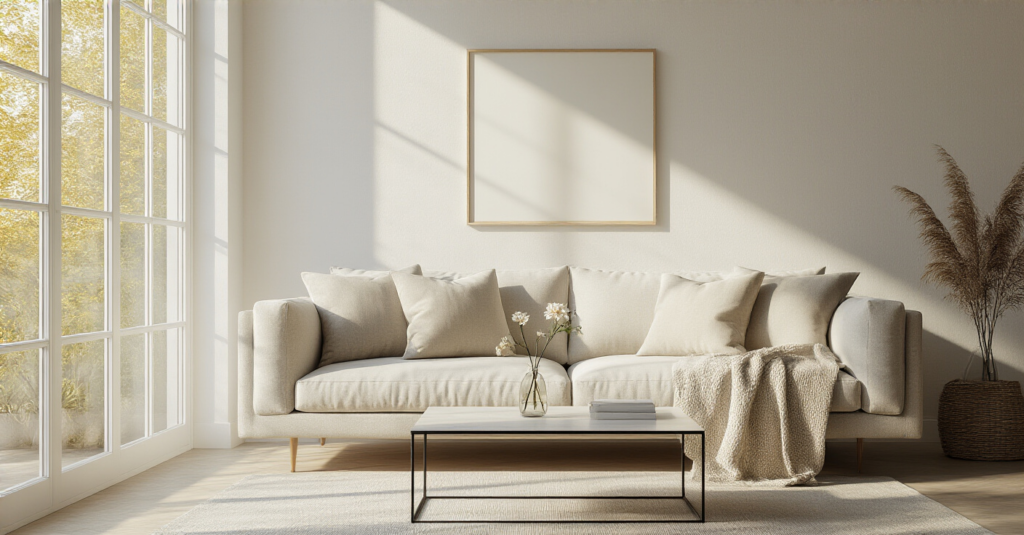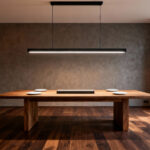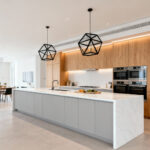Can we talk about something that drives me crazy? It’s the idea that creating a “simple” living room means getting rid of everything you own and living in a sterile, white box that looks like a sad art gallery. Every magazine shows these minimalist spaces that look like no human has ever actually sat on the couch, much less spilled coffee on it. That’s not simplicity; that’s just unrealistic.
As someone who designs workspaces—both in corporate high-rises and in the corner of your bedroom—I’ve seen what actually works. Real simplicity isn’t about deprivation. It’s about intentionality. It’s about designing a space that reduces your stress, increases your focus, and makes your day-to-day life easier. It’s a tool, not just a look. So forget the glossy magazines. Here’s what actually matters, what’s just noise, and the shortcuts I wish I’d known when I started.
Cultivating Clarity: Foundational Steps for a Simple Living Room (Part 1)
Before you buy a single thing, we need to lay the groundwork. Think of this as the system prep before you install new software. These first steps are about clearing the slate and defining your mission so that every decision you make from here on out is easier and more effective.
1. Perform a Thorough Declutter for Instant visual calm
Let’s get one thing straight: decluttering isn’t about buying more stylish bins to hide your junk. It’s about reducing the cognitive load on your brain. Every object in your field of vision is a piece of data your brain has to process, and a cluttered room is like having 100 browser tabs open at once. It’s exhausting, raises your cortisol levels, and kills your ability to focus. The goal here is visual silence.
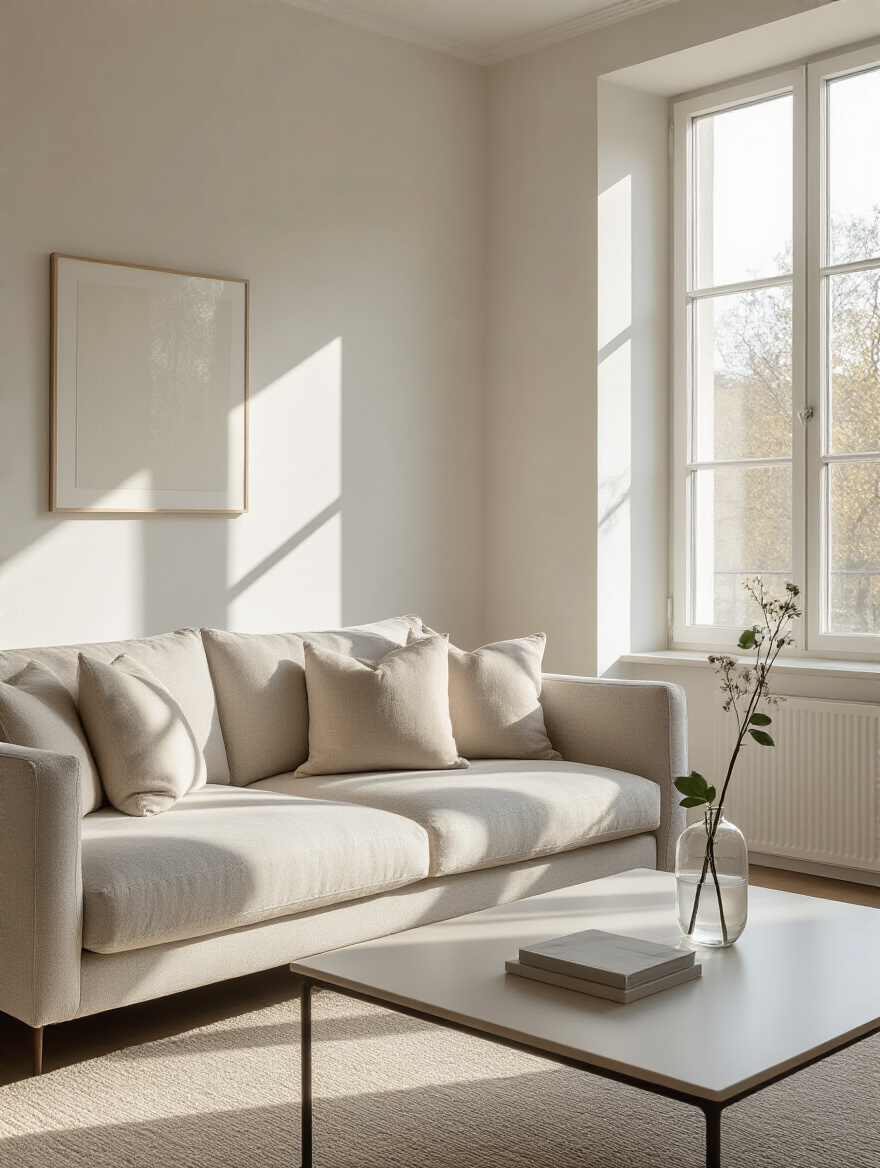
The shortcut is the “Three-Box Method,” but with a non-negotiable rule. Label boxes: ‘Keep in this room,’ ‘Relocate/Donate,’ and ‘Trash.’ The minute you finish a session, the ‘Relocate’ and ‘Trash’ boxes have to leave the room. Put them in your car or by the door. Don’t let them sit around and become new clutter. This one change in habit is the difference between tidying and actually decluttering.
That’s how you set the stage for a room that doesn’t just look calm, but actually helps you feel calm. Everything else we’re about to do is built on this foundation of less.
2. Define Your Room’s Core Function to Optimize Layout
You know what people always ask me? “How do I make my living room look good?” And my answer is always another question: “What do you need your living room to do?” Everyone wants a pretty room, but a pretty room you can’t actually live in is just a museum exhibit in your own home. Function has to come first.
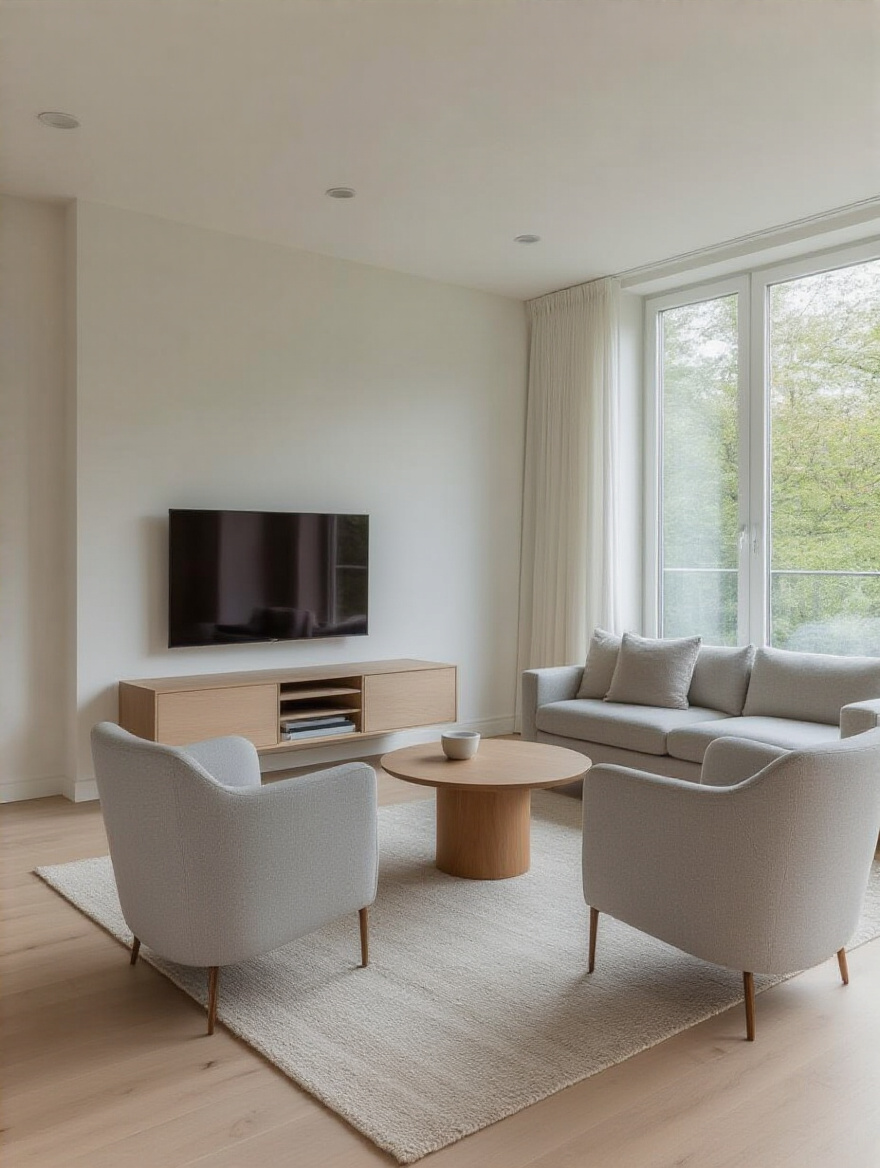
Is this room for watching movies as a family? Hosting friends for conversation? Is it a quiet zone for reading? Or, like for so many of us now, is a corner of it your full-time office? You have to be brutally honest about its primary job. A room designed for quiet reading needs a different layout than one designed for a 65-inch TV and surround sound. Once you define the function, the layout becomes obvious, and you stop fighting your space.
I once worked with a family whose living room was a constant source of stress. It was a battlefield of toys, a TV zone, and a pseudo-office. We zoned it. We created a clear “play zone” with hidden toy storage, a “conversation zone” with chairs facing each other, and moved the WFH setup. The chaos dropped by 80% overnight because the room finally supported their life instead of working against it.
3. Embrace a Limited Color Palette for Serene Harmony
The biggest BS line in design is that a neutral palette is boring. It’s not boring; it’s a foundation. Think of it like a uniform. A simple, well-fitting suit isn’t boring; it’s a powerful canvas you can build on. A limited color palette—maybe three or four complementary tones—does the same for your room. It eliminates visual noise and decision fatigue.
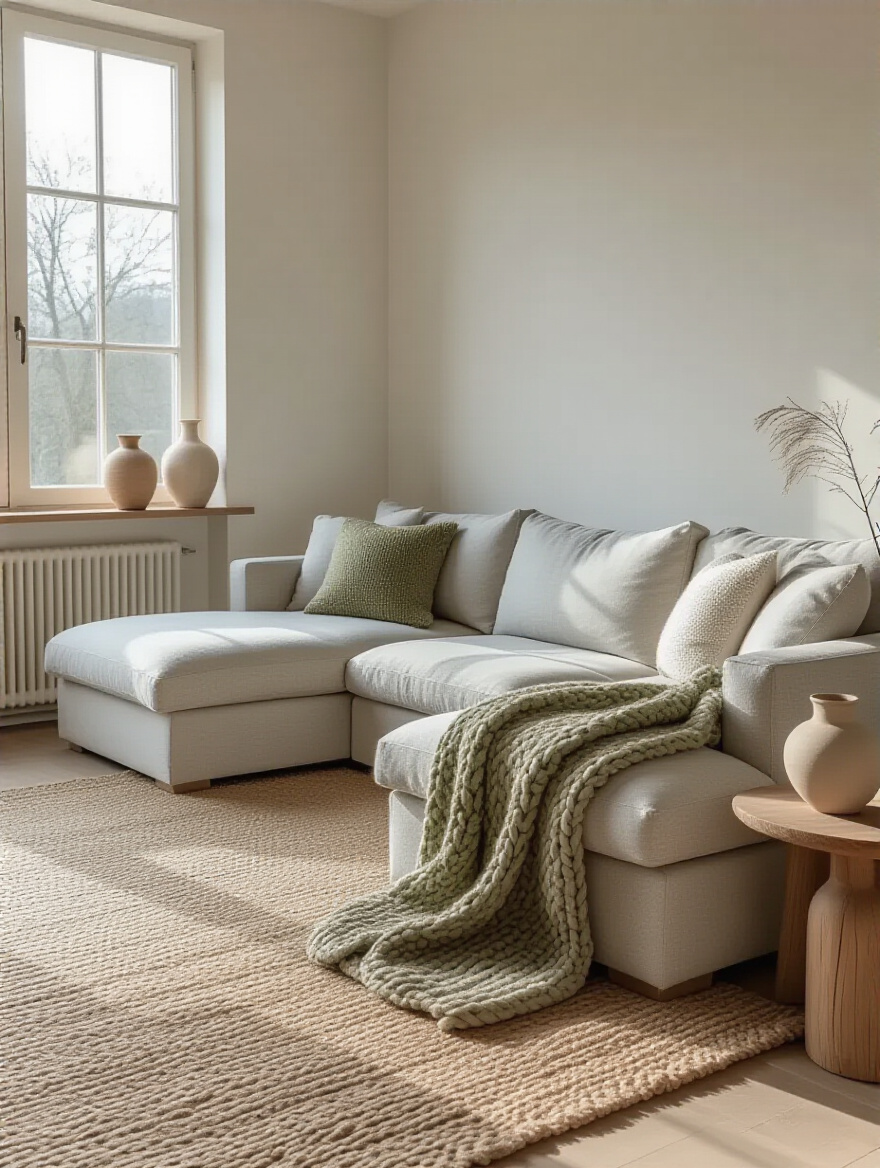
The easiest way to do this is the 60-30-10 rule. It’s a classic for a reason. 60% of your room is your main color (walls, sofa), 30% is a secondary color (accent chairs, curtains), and 10% is your accent (pillows, art, a vase). This formula gives you harmony without making everything one monotonous color. Pick your palette, and stick to it. It makes every future purchase—from a throw blanket to a new rug—infinitely easier.
You don’t get bonus points for using every color in the crayon box. Restraint is what creates that feeling of serene, effortless style.
4. Assess Natural Light Sources to Maximize Brightness
If you do nothing else, do this. Natural light is a non-negotiable for well-being. It regulates your mood, boosts your energy, and literally makes a space feel healthier. I had a client who was perpetually tired while working from home, and we traced it back to a desk setup in the darkest corner of his living room. His brain was basically in a state of permanent dusk.
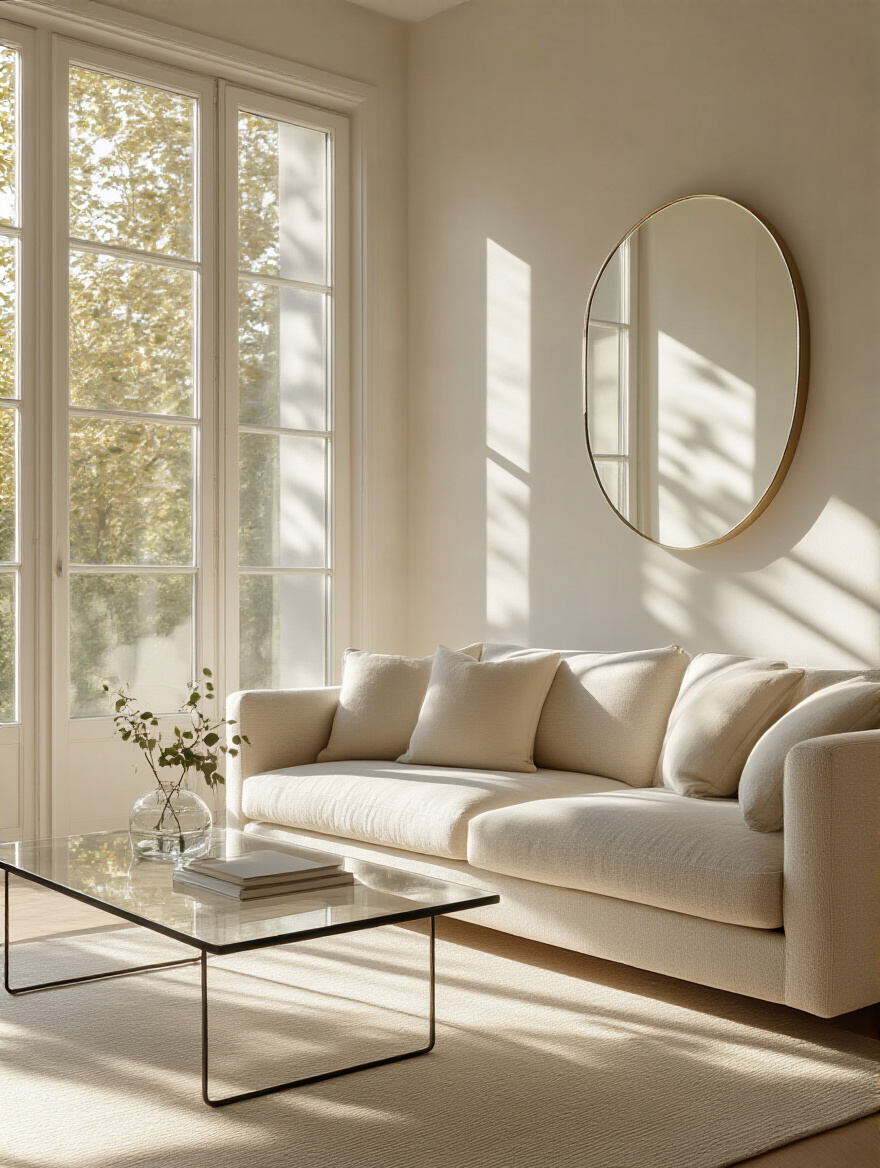
Spend a day just watching the light in your room. Where does it hit in the morning versus the afternoon? Then, ruthlessly eliminate anything blocking it. Heavy drapes? Swap them for sheers. A big, dark bookshelf next to the window? Move it. And here’s the game-changing shortcut: place a large mirror on the wall opposite your main window. It will literally double the amount of light in the room. It’s the oldest trick in the book because it works every single time.
Cultivating Clarity: Foundational Steps for a Simple Living Room (Part 2)
Okay, you’ve cleared the clutter and you know what your room needs to do. Now we get into the architecture of the space. How you arrange the big pieces will determine whether your room feels open and inviting or cramped and awkward.
5. Map Out Furniture Placement for Effortless Flow
Here’s my biggest pet peeve: walking into a room and seeing all the furniture pushed up against the walls like it’s a middle school dance. It’s the fastest way to make a room feel static, impersonal, and surprisingly, smaller. Furniture needs breathing room. Creating a layout isn’t about filling space; it’s about carving out pathways and creating conversational groupings.
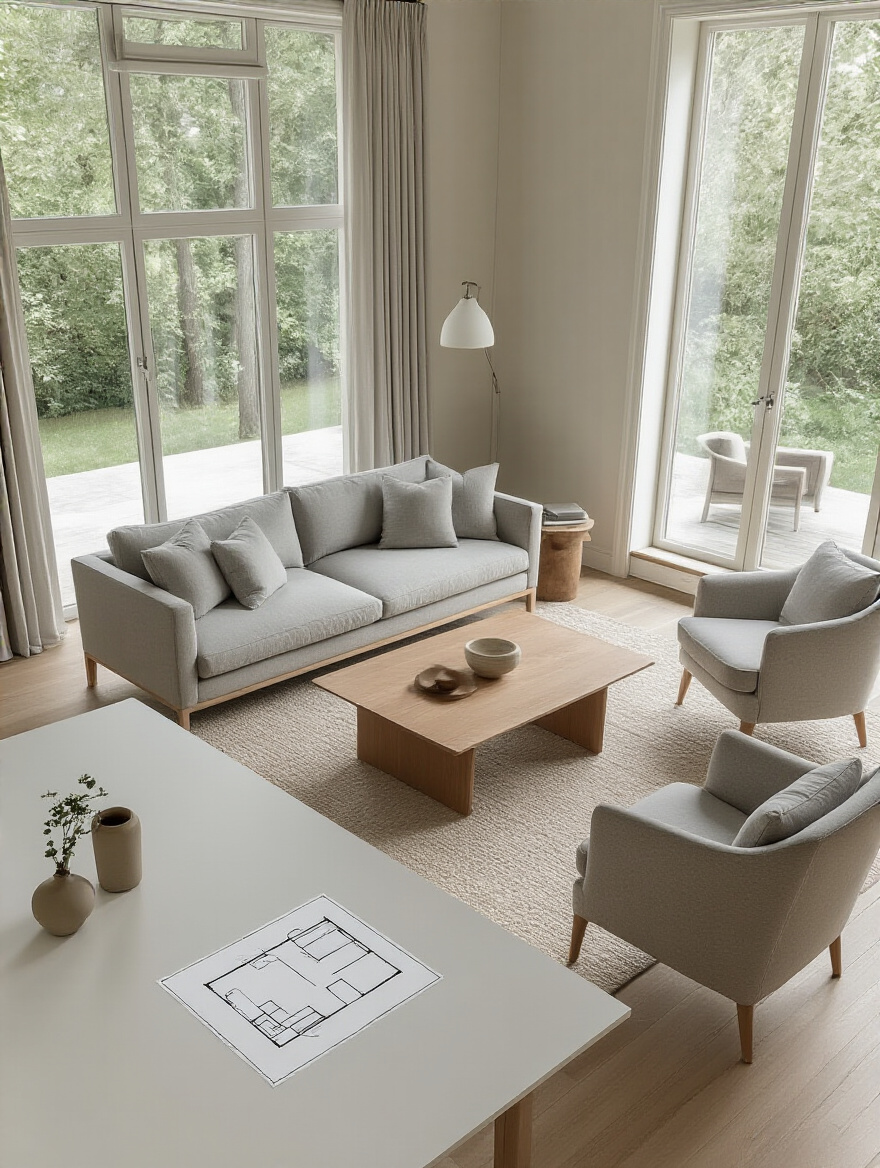
Before you move a single heavy thing, use painter’s tape on the floor to outline where your sofa, chairs, and tables will go. Walk the “room.” Can you get to the window easily? Is it an awkward squeeze to get to the couch? You should leave about 3 feet for major walkways. This simple step saves you from the back-breaking mistake of a bad layout.
“Good design allows for flow. If moving through your living room requires a series of awkward side-steps, the layout is broken.”
This isn’t just about looks. A room with good flow is physically and mentally easier to be in. There’s less friction, which translates to a greater sense of calm.
6. Identify Key Focal Points to Guide Design Decisions
Every great room has a focal point. It’s the first place your eye lands when you walk in, and it tells you what the room is all about. It gives the space a sense of purpose and order. Without one, your eye just bounces around a collection of objects, which feels chaotic.
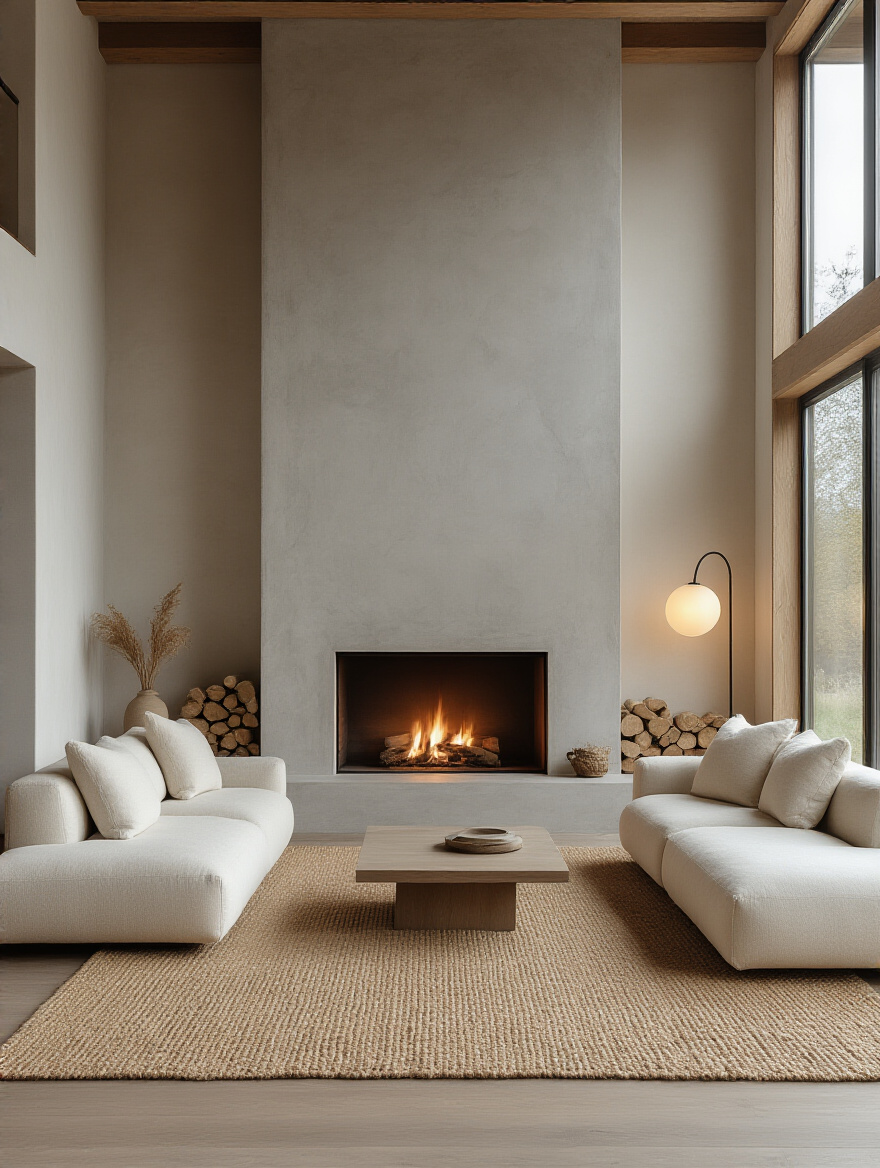
The focal point might be a fireplace, a large window with a great view, or a significant piece of art. If you don’t have a natural one, create one. But here’s the key: you can only have one star of the show. If your giant TV is competing with a bold piece of art and a fireplace, the room will feel visually noisy. Pick your hero, arrange the furniture to honor it, and let everything else play a supporting role.
For many, the TV is the default focal point, but it doesn’t have to be. I once worked in a long, narrow living room that felt completely off-balance. We ignored the TV (placing it on a less conspicuous wall) and made a huge, stunning abstract painting on the main wall the focal point. Instantly, the room felt more sophisticated and intentional.
Smart Selections: Core Elements for Effortless Style (Part 1)
Now that the foundation is set, we can talk about the stuff. But we’re not just filling space. Every core piece you choose should be a smart investment in both the style and function of your room.
7. Choose Multi-Functional Furniture for Space Efficiency
Multi-functional furniture isn’t just for tiny apartments anymore; it’s for anyone who values efficiency. Why have a coffee table when you can have a coffee table that’s also a storage chest and an occasional desk? Every piece that does double- or triple-duty means one less piece of furniture you need to own, which is the very definition of simple decor.
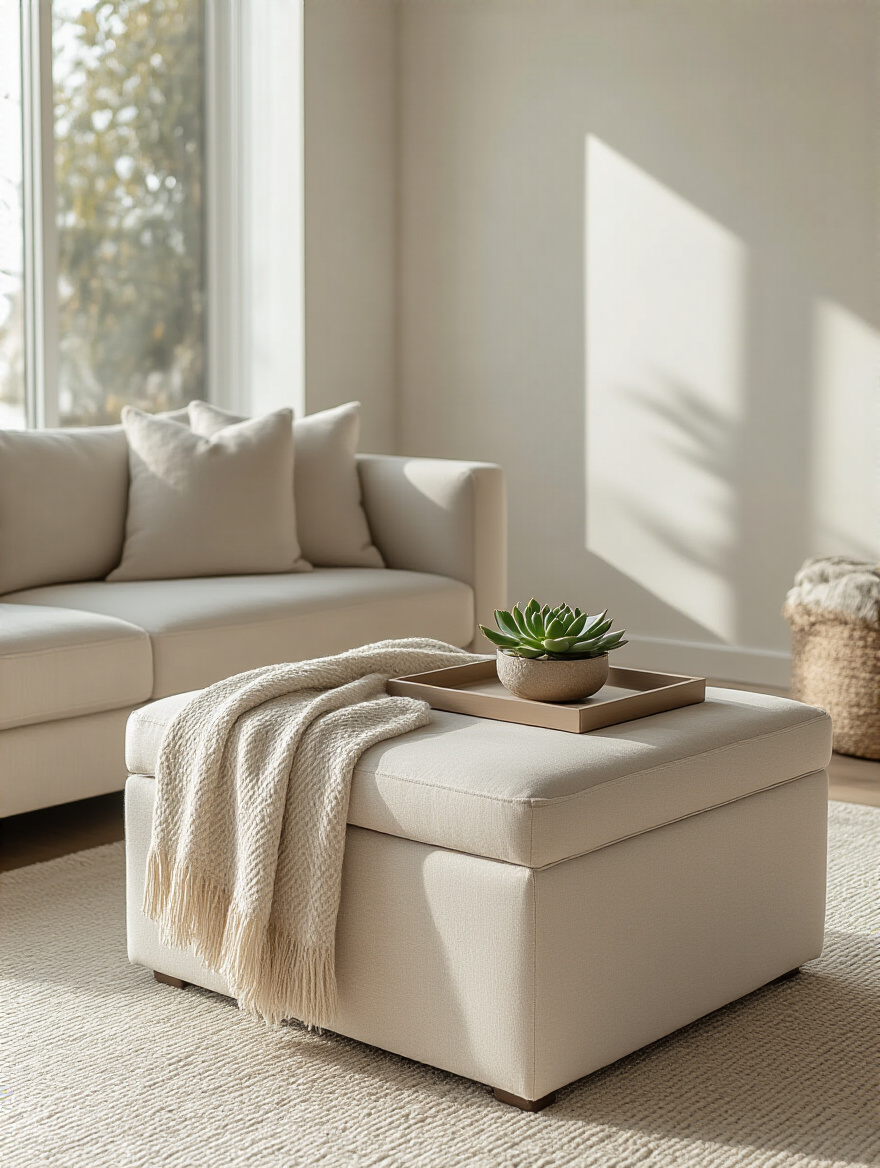
I had a freelance client who worked from her small living room. Her “office” consisted of a lift-top coffee table. During the day, it was her ergonomic desk. At 5 p.m., the laptop went inside, the top went down, and it was just a living room again. This created a powerful psychological boundary between work and life. But be warned: the BS everyone falls for is cheap, flimsy multi-functional pieces. If the mechanism is clunky or feels like it’s going to break, it will just become a source of frustration. Invest in quality here.
8. Opt for Clean-Lined Silhouettes in Major Furniture Pieces
Think of your big furniture pieces—your sofa, your media console—as the “architecture” of your room. When you keep those silhouettes clean and simple (think straight lines, minimal ornamentation), you create a calm visual baseline. Ornate, fussy furniture adds a ton of visual noise before you’ve even added a single pillow.
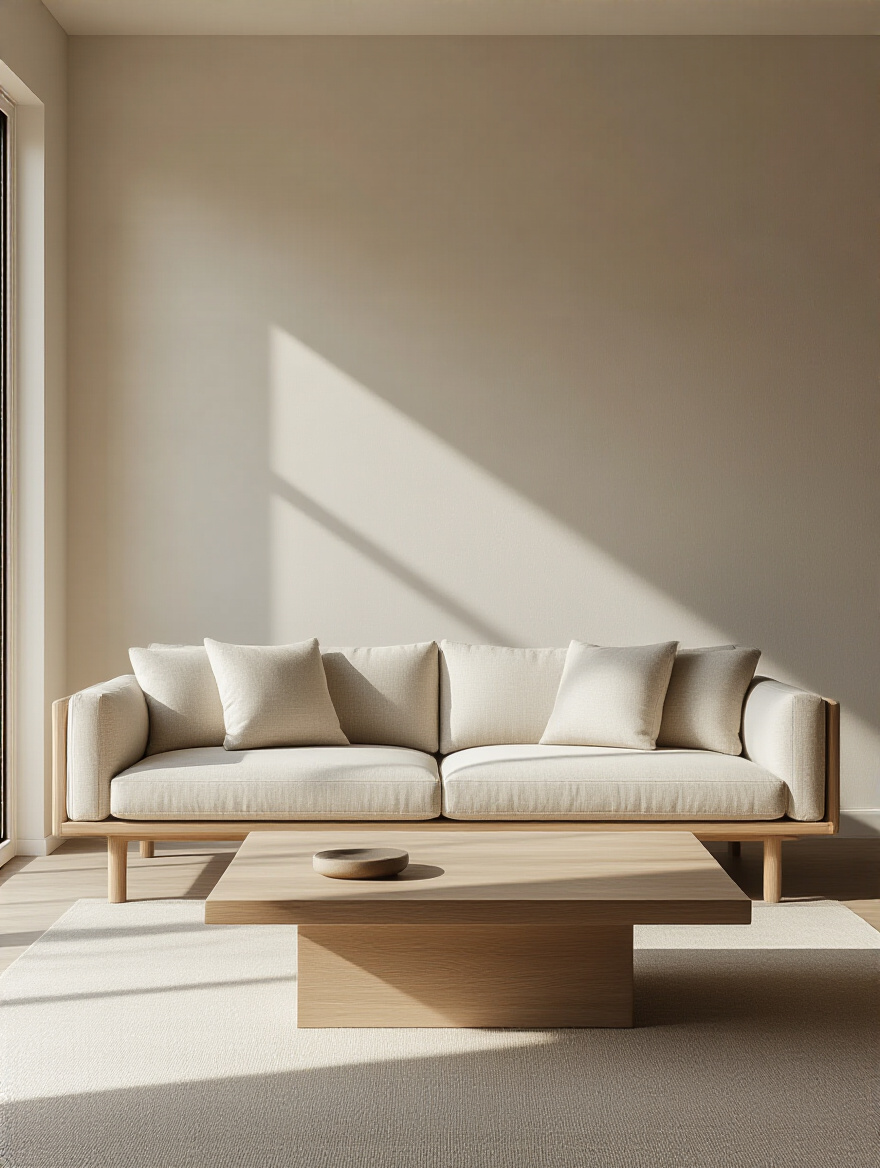
Clean lines are also timeless. That simple, track-arm sofa will still look good in ten years, long after some trendy, overstuffed beast has gone out of style. It’s a long-term investment in serenity. People hear “clean-lined” and think “uncomfortable,” but that’s a myth. Comfort comes from quality construction and materials, not from having a million tufts and rolled arms.
9. Incorporate Soft Textures with Thoughtfully Placed Throws and Pillows
Okay, now that you have a clean foundation, we can add the layers that make it feel like a home. This is where you inject personality and comfort without adding clutter. Texture is your best friend. A chunky knit throw, a velvet pillow, a linen curtain—these things add warmth and depth without screaming for attention.
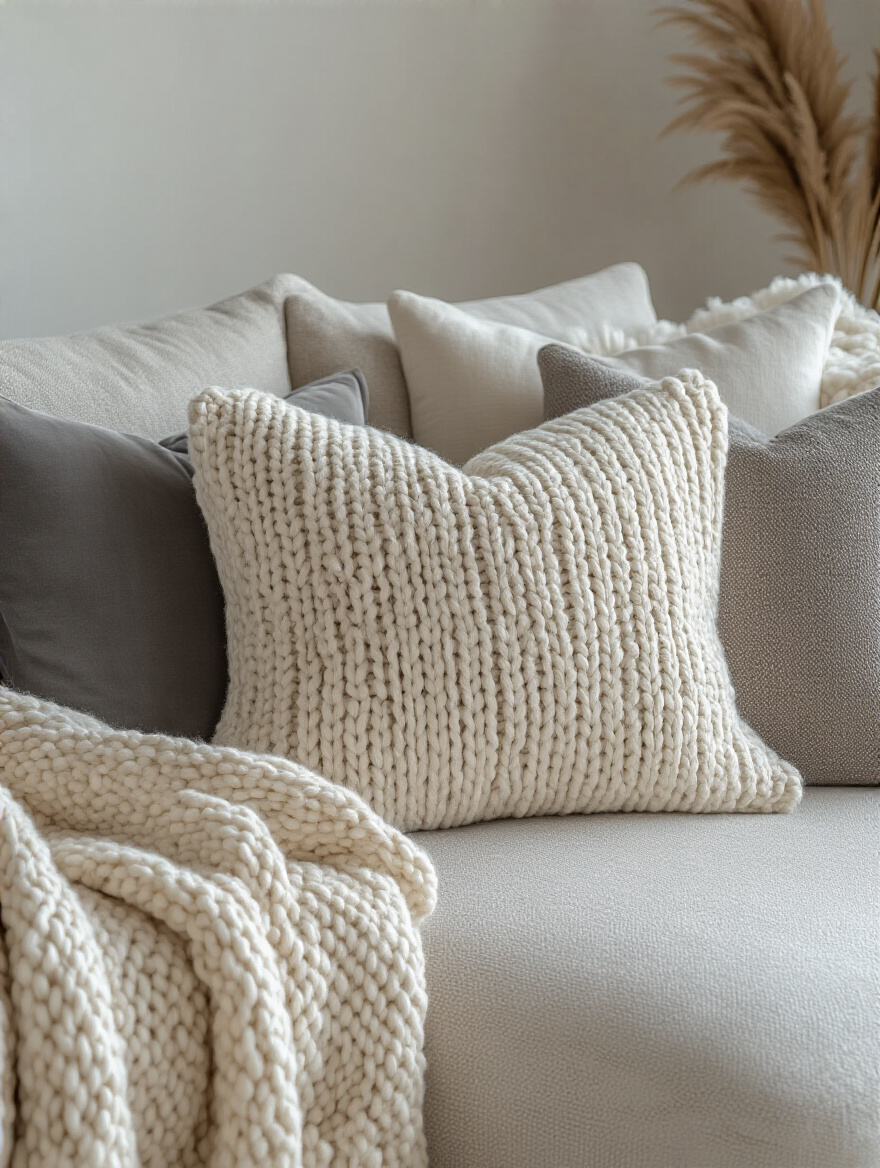
Here’s the secret sauce: ditch the sad, pre-packaged “pillow and throw sets.” It’s the design equivalent of a matching tie and pocket square—it looks forced. Instead, mix your textures. Pair a velvet pillow with a linen one. And always, always buy pillow inserts that are one size larger than your covers. A 20-inch cover needs a 22-inch insert. This is what gives you that full, plush, professionally “chopped” look instead of a sad, flat pancake.
10. Strategically Place Lighting to Create Ambiance and Function
I’m going to say it: overhead lighting is the enemy of a serene living room. A single fixture in the middle of the ceiling casts harsh, unflattering shadows and makes a room feel like a cafeteria. Good lighting design is about creating layers and pools of light. It’s the single most powerful tool for controlling the mood of a room.
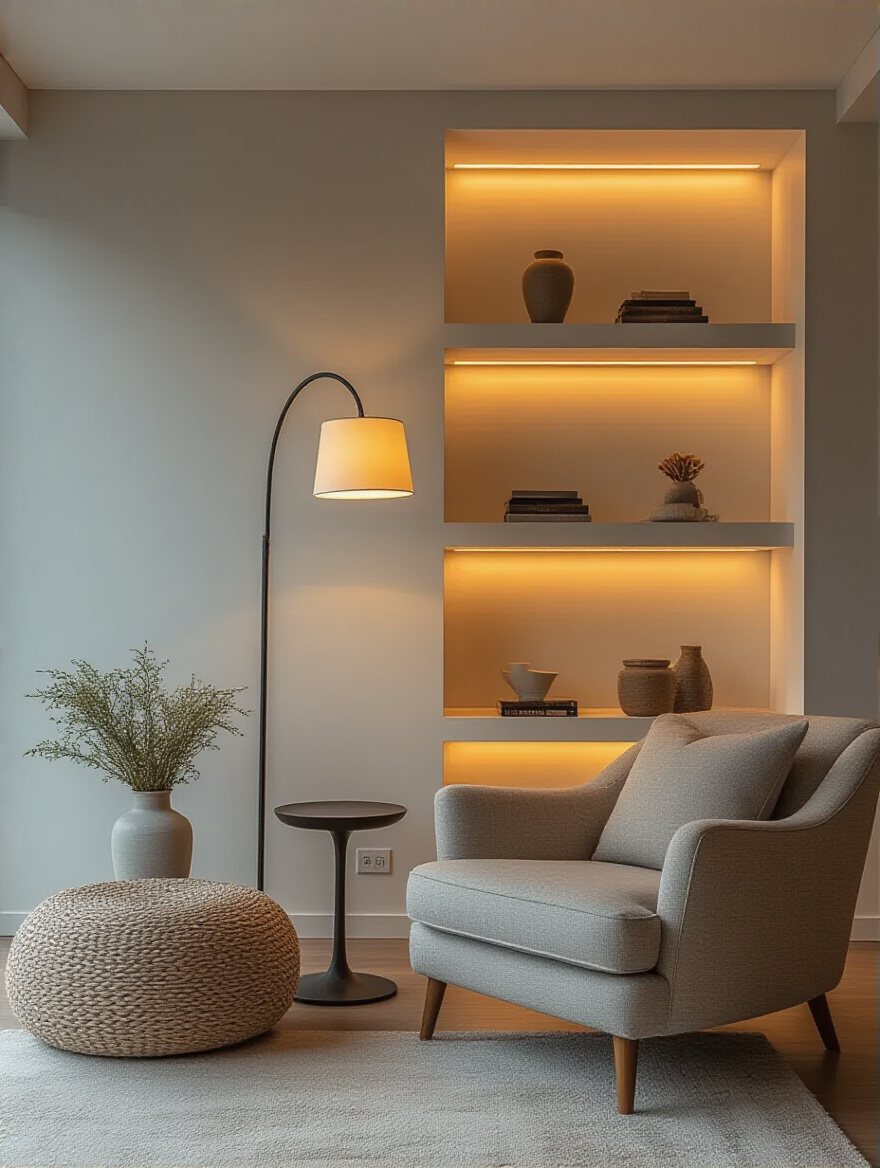
You need three layers. Ambient: This is your general, room-filling light, which can come from a central fixture (always on a dimmer!) or floor lamps. Task: This is focused light for activities, like a reading lamp by a chair. Accent: This is the jewelry—a small lamp on a bookshelf or a light that highlights a piece of art. Getting this mix right makes your room functional for every need, from bright and focused to low and relaxed. Dimmers are not a luxury; they are a necessity.
Smart Selections: Core Elements for Effortless Style (Part 2)
We’re honing in on the high-impact details. These are the choices that require precision but pay off big time in creating a room that feels both curated and personal.
11. Select One Signature Artwork or Mirror to Anchor a Wall
Remember our talk about focal points? This is how you execute it. Instead of a gallery wall with a dozen small frames (which can quickly look cluttered), choose one large, significant piece of art to anchor a main wall. It creates a powerful, confident statement and gives the room a center of gravity.
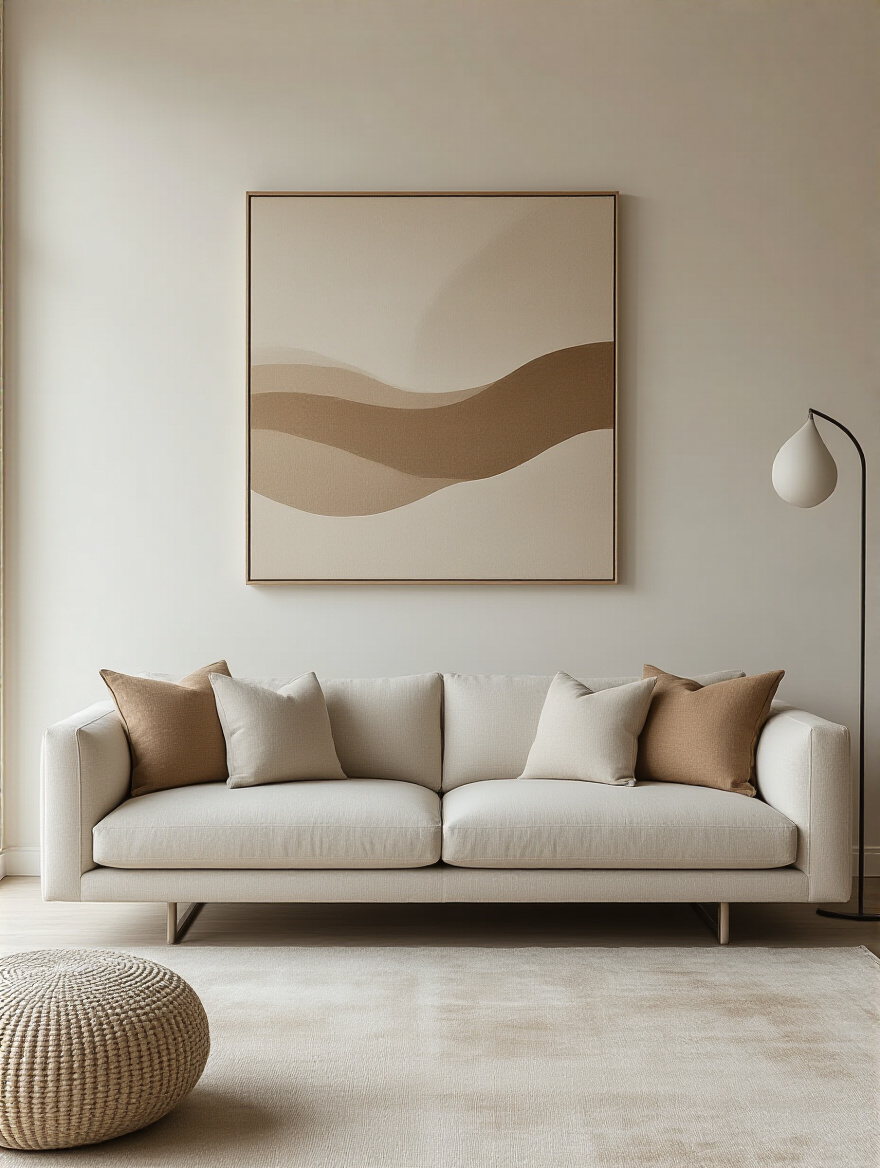
My favorite hack for small or dark rooms is to make that anchor piece a large mirror. It functions as art, but it also bounces light around and creates an illusion of depth, making the space feel bigger and brighter. Just remember the one rule everyone gets wrong: don’t hang it too high. The center of the piece should be at eye level (around 57-60 inches from the floor), or if it’s over a sofa, the bottom should be about 6-8 inches above the back of the sofa.
12. Integrate Subtle Greenery for Organic Vitality
A room without anything living in it can feel sterile. Plants are the fastest, cheapest way to add life, texture, and an organic element to your space. It’s called biophilic design, and the science is clear: having plants in our environment measurably reduces stress and improves air quality.
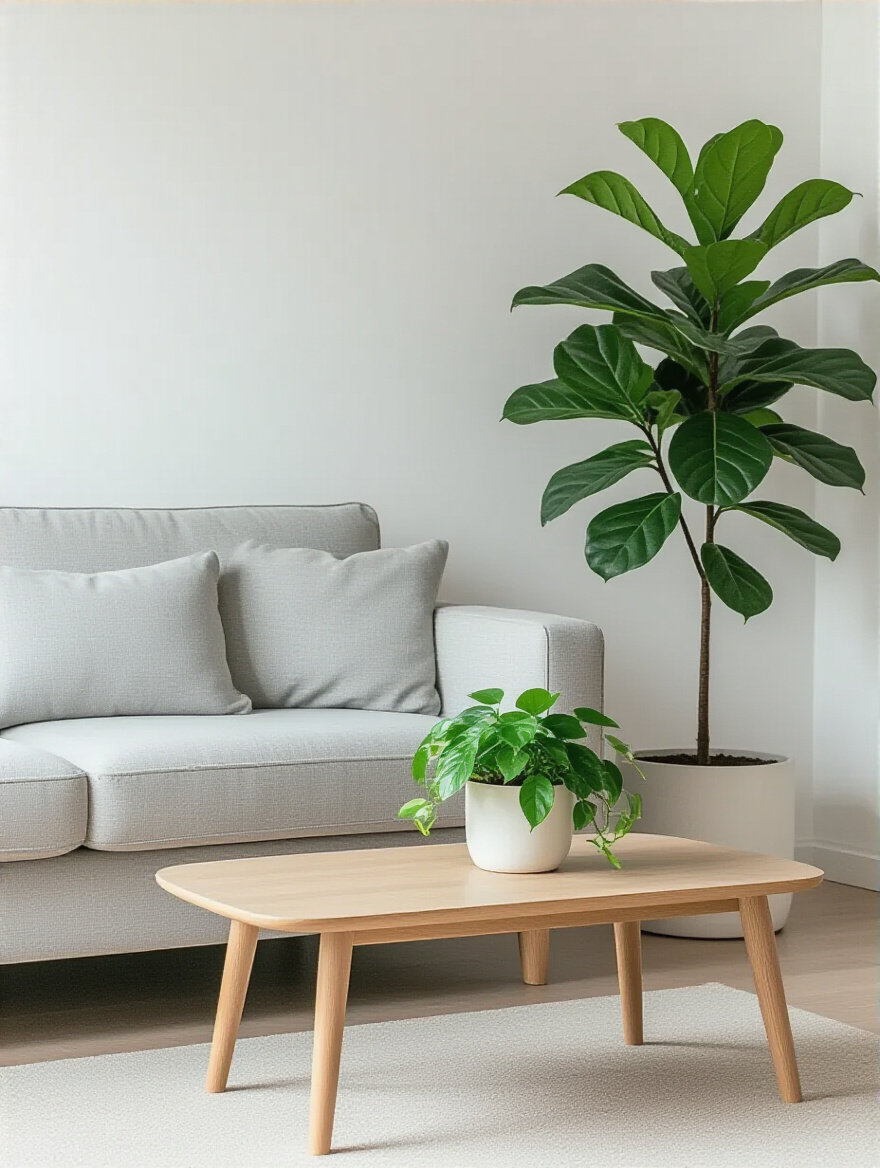
But here’s the tough love: a dying plant is more stressful than no plant at all. Be realistic about your light conditions and how much you’re willing to care for it. If you have low light and a black thumb, get a snake plant or a ZZ plant. They thrive on neglect. And stick to simple, classic planters—terracotta, white ceramic—so the focus stays on the plant itself, not a loud, distracting pot.
Thoughtful Touches: Elevating Simplicity with Purpose (Part 1)
This is the final polish. These are the small, intentional habits and details that separate a simply decorated room from one that feels truly serene and purposeful.
13. Curate Open Shelves with Minimalist Groupings of Odd Numbers
Open shelves are for display, not storage. If your shelves are crammed from end to end, they’re just exposed clutter. The key is to curate them like you’re a museum director. Group objects in odd numbers—threes or fives—as the asymmetry is more pleasing and dynamic to the human eye.
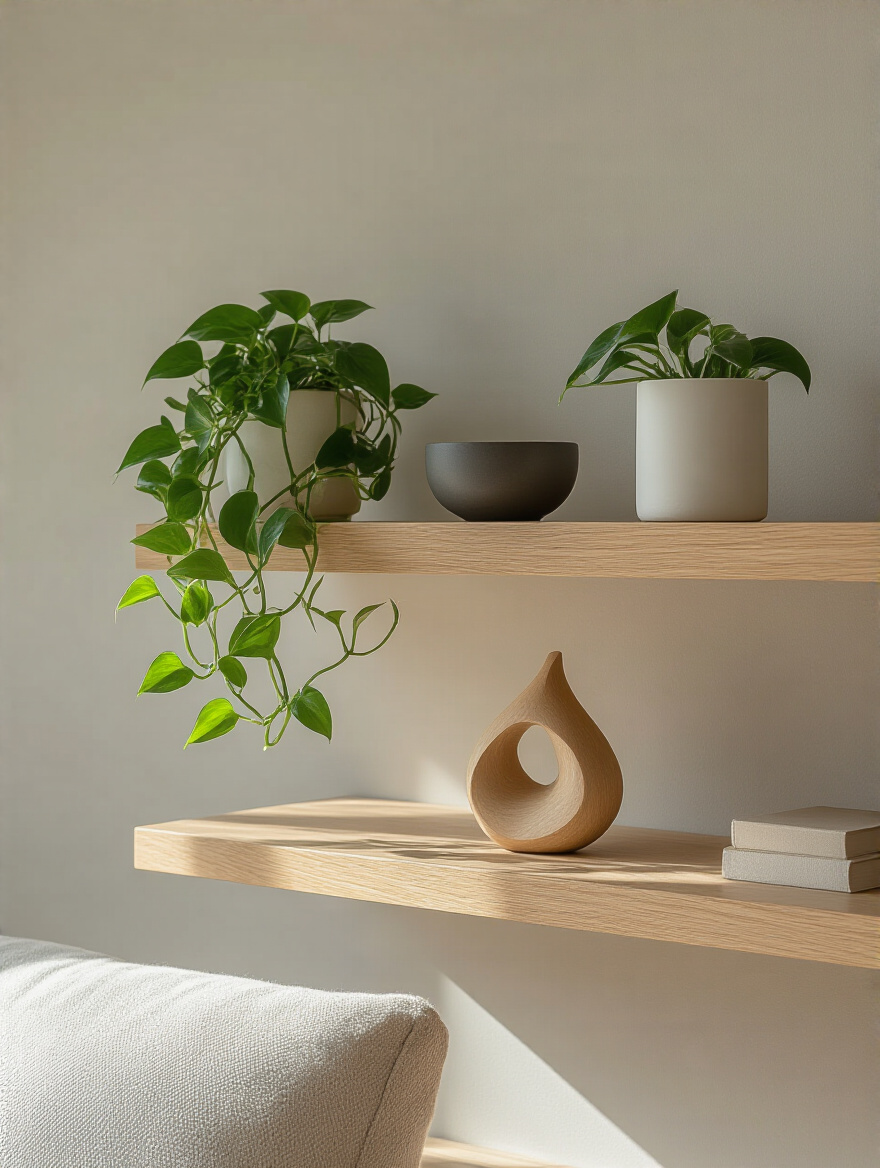
Most importantly, embrace negative space. The empty space around your objects is just as important as the objects themselves. It gives them breathing room and allows them to be seen and appreciated. One beautiful vase with a couple of books next to it makes a far greater impact than a shelf packed with twenty knick-knacks.
14. Utilize Discreet Storage Solutions to Contain Clutter Daily
You’ve decluttered the big stuff, but life comes with daily clutter: remotes, magazines, chargers, blankets. This is where discreet storage becomes your secret weapon for maintaining calm. That storage ottoman isn’t just a footrest; it’s a black hole for blankets and video game controllers. The media console with solid doors is better than the one with open shelves because it hides the mess of cables.
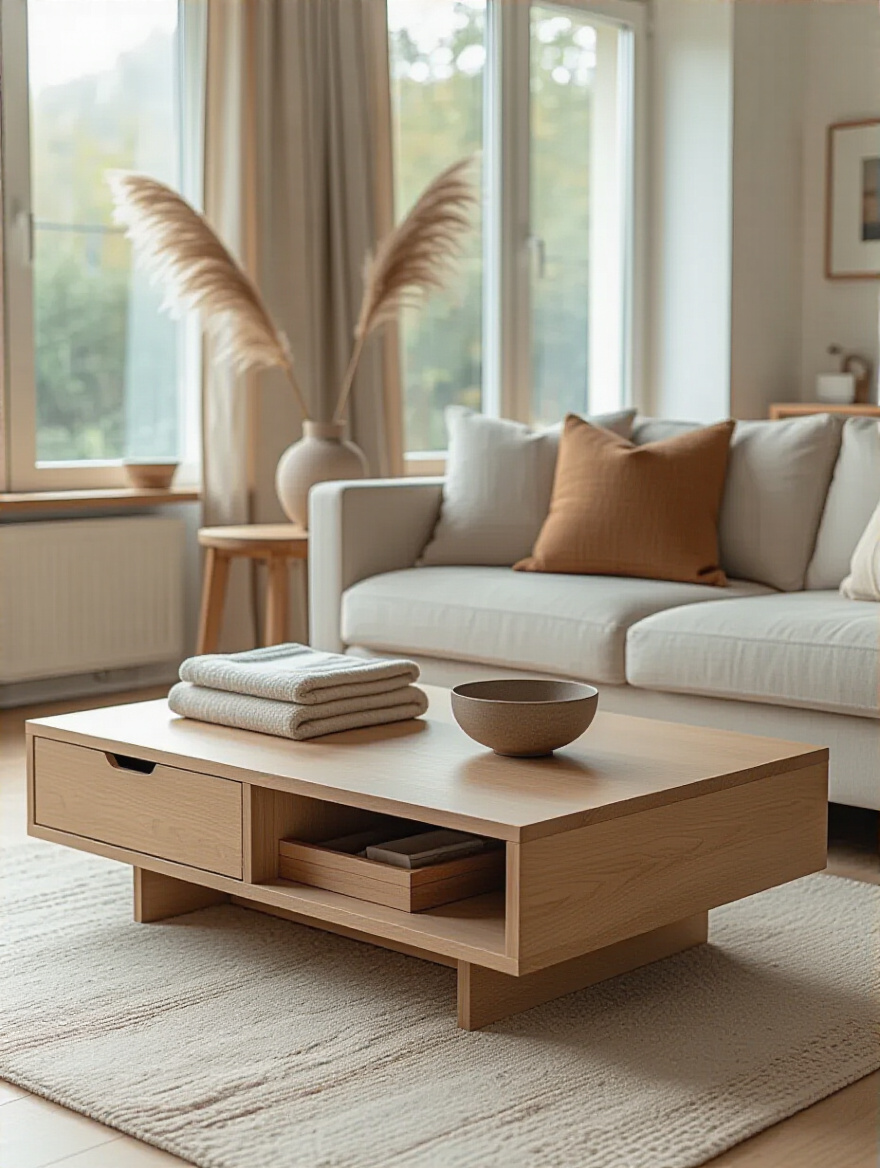
The goal isn’t to pretend the mess doesn’t exist, but to give it a home that’s out of sight. I once worked with a client whose main source of stress was the pile of “stuff” that accumulated on her coffee table every day. We swapped it for a lift-top table. At the end of the day, everything went inside. Problem solved. It gave her back her peaceful evenings.
15. Arrange Books and Magazines Vertically or Horizontally for Neatness
Books can be a huge source of visual clutter, but they don’t have to be. Arranging them with intention can turn them into a design element. On a bookshelf, vary the orientation: a section of vertically stacked books next to a short horizontal stack of 2-3 books. This breaks up the monotony and creates visual interest.
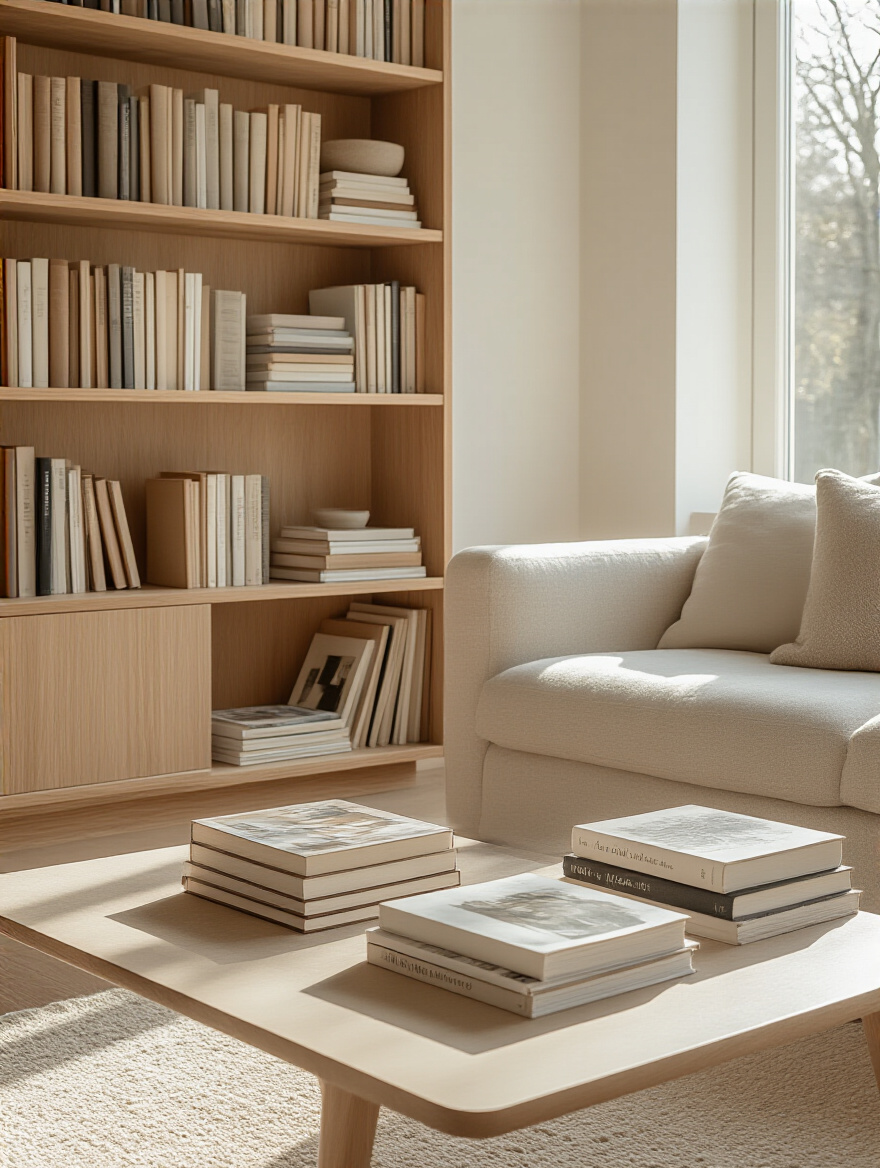
On a coffee table, a small, neat stack of two or three beautiful magazines or books acts as an anchor. It looks deliberate and curated, not like you just forgot to put your mail away. This small shift in how you see your books—from simple objects to design tools—makes a huge difference in the overall neatness of your room.
16. Introduce Personal Touches Through Limited, Meaningful Objects
A simple room shouldn’t be a generic one. Your home needs to feel like you. But instead of displaying every single photo and souvenir you own, be a ruthless editor. Choose a few objects that have a real story or deep personal meaning.
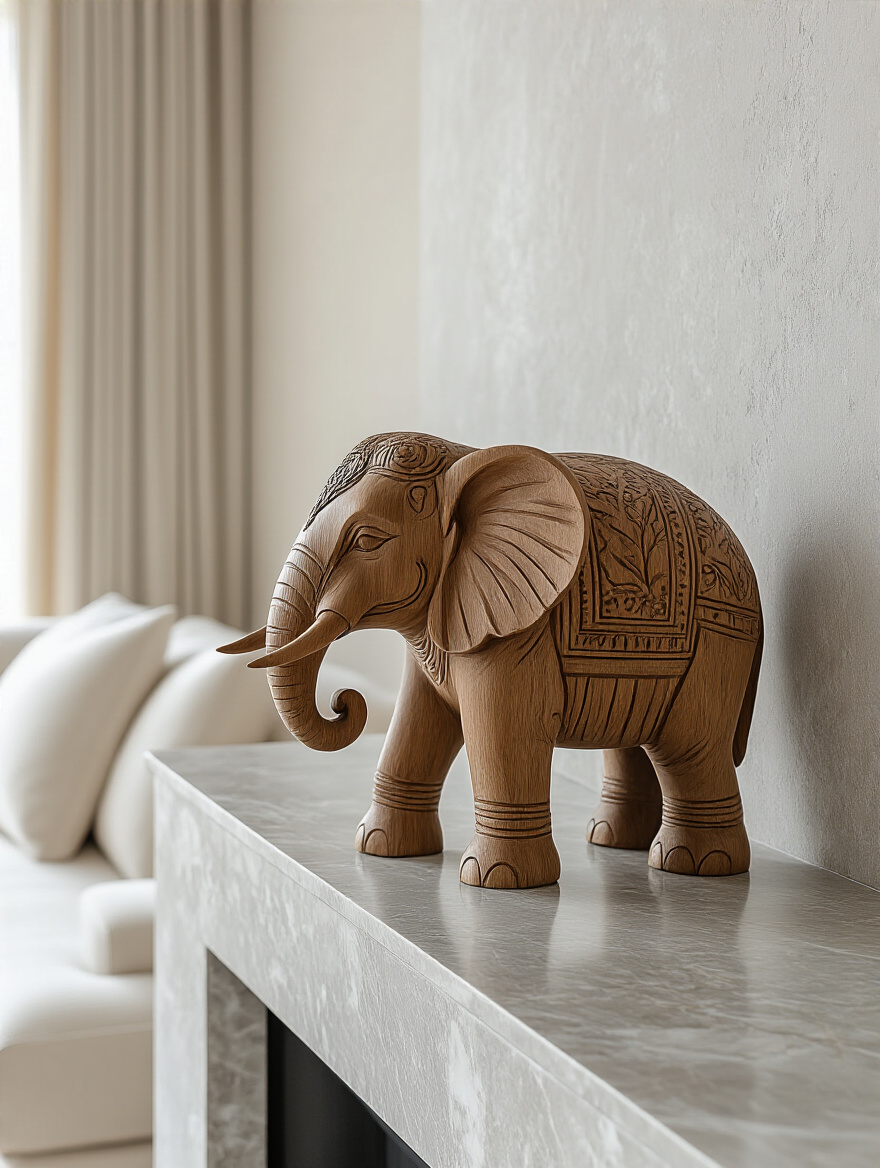
That one sculpture you bought on a memorable trip, a small collection of family photos in cohesive frames, a vase that was your grandmother’s—these things tell your story far more effectively than a shelf full of generic decor. The shortcut here is the tray. Grouping a few small, meaningful items on a tray on your coffee table or console gives them presence and stops them from looking like random clutter.
Thoughtful Touches: Elevating Simplicity with Purpose (Part 2)
Your room isn’t a static project that’s ever “done.” It’s a living space. These final strategies are about maintaining that serene feeling over time, ensuring it adapts and continues to support you.
17. Rotate Decorative Accents Seasonally to Keep Things Fresh and Intentional
You ever notice how you eventually stop “seeing” the art on your walls? It’s called decor blindness. Rotating a few small things seasonally keeps your space feeling fresh and prevents that stagnation. It’s not about buying a whole new set of decorations for every season—that’s just creating more clutter.
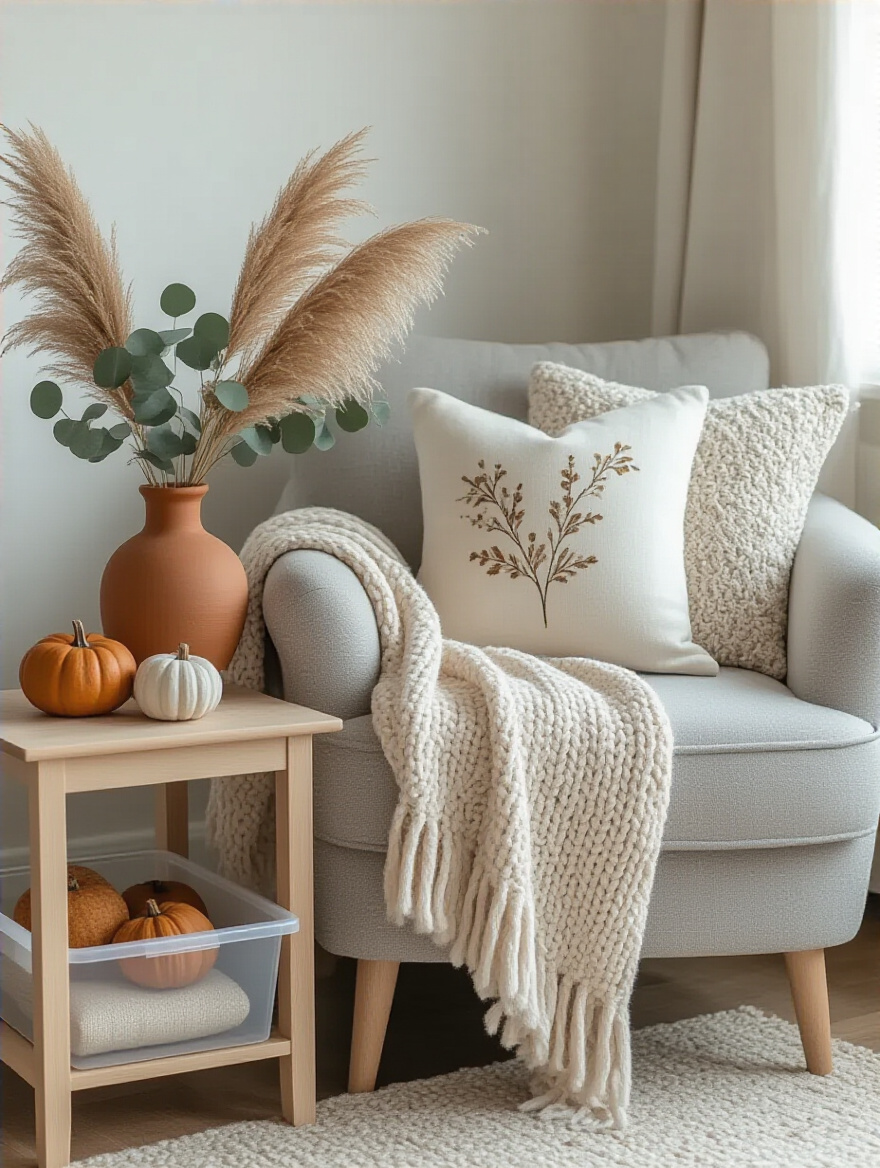
It can be as simple as swapping the linen pillow covers for velvet ones in the fall, or changing the photo in a prominent frame, or replacing a vase of summer flowers with a bowl of pinecones in the winter. Keep one bin in storage labeled “Off-Season Accents.” This simple habit makes your home feel more connected to the world outside and keeps you engaged with your own space.
18. Establish a Regular Reset Routine to Preserve Visual Calm
This is, without a doubt, the most important rule of all. A serene living room doesn’t stay that way on its own. It requires a small, consistent habit. The “reset routine” is your defense against the slow creep of chaos. It’s not about deep cleaning; it’s a 10-minute sweep at the end of the day.
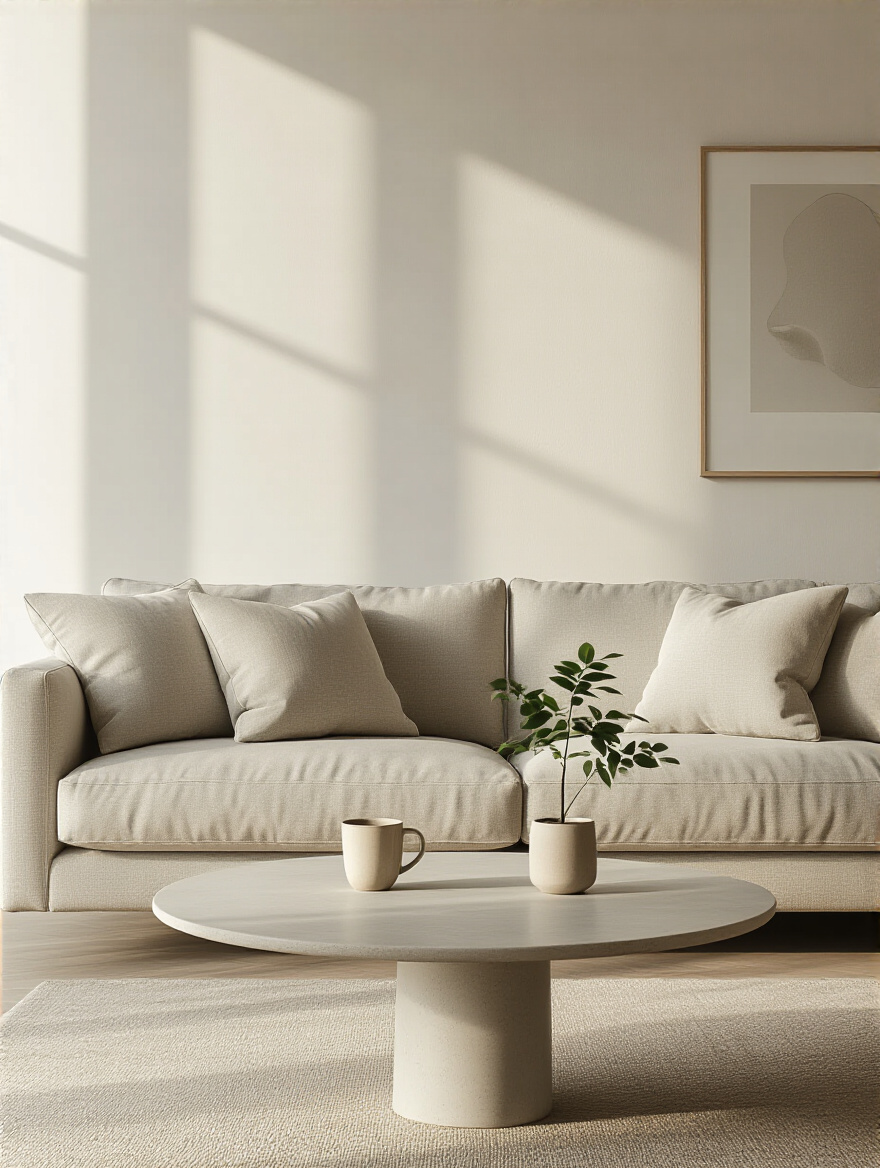
Put the remote back in its drawer. Fold the throw blanket. Put the glasses in the dishwasher. Fluff the pillows. This tiny ritual signals the end of the day, clears your visual field, and ensures you wake up to a calm, orderly space instead of yesterday’s mess. It’s the single greatest productivity and stress-reduction hack I know, and it has nothing to do with buying furniture.
Conclusion
Creating a simple, serene living room isn’t about following a rigid set of minimalist rules or creating a space that feels empty. It’s about making a series of intentional choices that remove friction from your daily life. It’s about designing a supportive environment where your brain can rest, you can focus, and you feel genuinely at home.
Don’t get overwhelmed and try to do all of this at once. Pick one thing from this list that resonated with you. Maybe it’s finally dealing with the light situation or just committing to a 10-minute nightly reset. Small, consistent actions are what transform a space. You have the power to create a room that not only looks calm but actively contributes to your sense of well-being. Start today.
